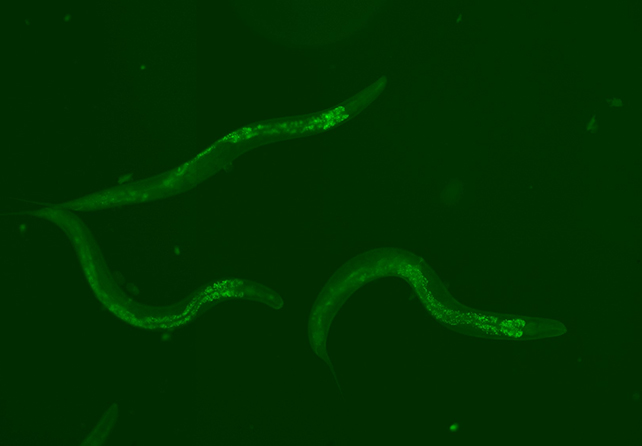Scientists aren't stopping in their attempts to try and unlock the secrets of aging so we can live healthier lives for longer. Now research into 'jumping genes' has revealed a crucial role they play in the way our bodies get older.
We all have transposable elements (TEs) in our DNA code; sequences that can relocate or 'jump' from one section to another.
If DNA is like a biological blueprint for our bodies, then TEs are bits of this blueprint that can move around within the genome – it's a natural process in humans and other animals, but if it's not carefully controlled, it can cause problems.
Having previously identified a sequence of molecular reactions called the Piwi-piRNA pathway and established its role in controlling TEs, researchers from Eötvös Loránd University in Hungary wanted to see if manipulating it would somehow alter the aging process in Caenorhabditis elegans worms.

"In our lifespan assays, by merely downregulating TEs or somatically overexpressing the Piwi-piRNA pathway elements, we observed a statistically significant lifespan advantage," says molecular geneticist Ádám Sturm from Eötvös Loránd University.
"This opens the door to a myriad of potential applications in the world of medicine and biology."
In other words, the worms lived noticeably longer when TE activity was reduced via Piwi-piRNA, suggesting that part of the reason that our bodies age is because of the way these jumping genes are moving around in the DNA genome.
That fits in with studies on animals like the so-called immortal jellyfish: a hydrozoan that is able to continually regenerate and in theory live forever (if it wasn't for disease or predators). The way that the Piwi-piRNA pathway suppresses TEs in this jellyfish and other similar creatures has also been looked at before.
But until now, it hasn't been clear whether cellular aging influenced TE activity, or whether TE activity influenced cellular aging. With this C. elegans study, it appears the latter hypothesis is correct, giving us another insight into how organisms get older.
Furthermore, the researchers also noticed an increase in DNA N6-adenine methylation within TE segments – a type of shift in gene activity which increases TE activity – as the worms aged, with the implication being that TEs get busier as we get older.
These are all fascinating findings, and further down the line, we may be able to modify and influence this TE behavior so cells don't age as quickly as they otherwise might. We probably won't ever become immortal jellyfish, but we might be able to ensure that our elderly populations have fewer problems with diseases and ailments.
"This epigenetic modification may pave the way for a method to determine age from DNA, providing an accurate biological clock," says molecular geneticist Tibor Vellai from Eötvös Loránd University.
The research has been published in Nature Communications.
